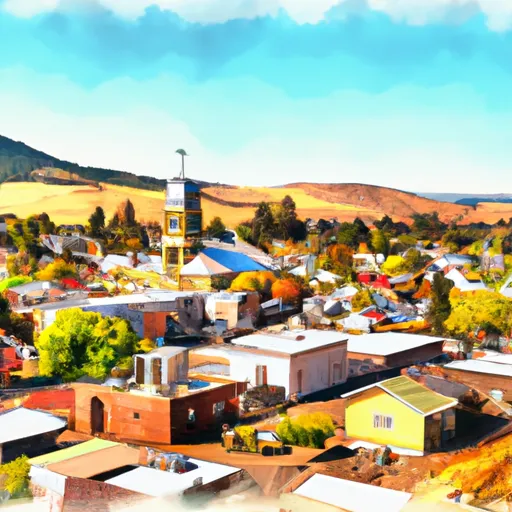-
 Snoflo Premium
Snoflo Premium
Get unlimited access to all our content
With no Ad interruptions! - Start Your Free Trial Login with existing account
Waitsburg
Eden Index
Climate
9.5
•
Recreation
2.5
•
Community
•
Safeguard
4.7/10

Waitsburg is a small town located in the southeastern part of Washington State. The climate in Waitsburg is classified as semi-arid, characterized by hot, dry summers and cold winters. Average high temperatures in the summer months reach the mid-80s°F (around 29°C), while winter temperatures can drop to the mid-20s°F (around -4°C). Precipitation is relatively low, averaging around 12 inches (30 cm) per year, with most of it falling during the winter months.
Hydrology constituents in Waitsburg are primarily influenced by the Touchet River, which flows nearby. The river serves as a source of irrigation for local agriculture and supports diverse aquatic ecosystems. Furthermore, the area is rich in groundwater resources, which supplement the community's water supply.
Waitsburg offers various outdoor recreation opportunities. The nearby Blue Mountains provide ample opportunities for hiking, camping, and wildlife observation. The Touchet River offers fishing opportunities, with trout being a popular catch. Additionally, the surrounding countryside is ideal for cycling and horseback riding, offering scenic views of farmland and rolling hills. Overall, Waitsburg's climate, hydrology constituents, and outdoor recreation options make it an attractive destination for those seeking a tranquil and adventurous experience in the heart of Washington State.
What is the Eden Index?
The Snoflo Eden Index serves as a comprehensive rating system for regions, evaluating their desirability through a holistic assessment of climate health, outdoor recreation opportunities, and natural disaster risk, acknowledging the profound impact of these factors on livability and well-being.
Climate Health Indicator (CHI): 9.5
Waitsburg receives approximately
524mm of rain per year,
with humidity levels near 68%
and air temperatures averaging around
11°C.
Waitsburg has a plant hardyness factor of
7, meaning
plants and agriculture in this region tend to thrive during the non-winter months.
By considering the ideal temperature range, reliable water supplies, clean air, and stable seasonal rain or snowpacks, the Climate Health Indicator (CHI) underscores the significance of a healthy climate as the foundation for quality living.
A healthy climate is paramount for ensuring a high quality of life and livability in a region, fostering both physical well-being and environmental harmony. This can be characterized by ideal temperatures, reliable access to water supplies, clean air, and consistent seasonal rain or snowpacks.
Weather Forecast
Streamflow Conditions
Middle Columbia
Area Rivers
Middle Columbia
Snowpack Depths
Middle Columbia
Reservoir Storage Capacity
Middle Columbia
Groundwater Levels
Recreational Opportunity Index (ROI): 2.5
The Recreational Opportunity Index (ROI) recognizes the value of outdoor recreational options, such as parks, hiking trails, camping sites, and fishing spots, while acknowledging that climate plays a pivotal role in ensuring the comfort and consistency of these experiences.
Access to outdoor recreational opportunities, encompassing activities such as parks, hiking, camping, and fishing, is crucial for overall well-being, and the climate plays a pivotal role in enabling and enhancing these experiences, ensuring that individuals can engage in nature-based activities comfortably and consistently.
Camping Areas
| Campground | Campsites | Reservations | Toilets | Showers | Elevation |
|---|---|---|---|---|---|
| Mottet | 6 | 5,133 ft | |||
| Jubilee Lake | 115 | 4,715 ft | |||
| Target Meadows | 22 | 4,775 ft | |||
| Lewis and Clark Trail State Park | 28 | 1,402 ft | |||
| Ayer Boat Basin - Snake River | None | 540 ft | |||
| Palouse Falls State Park | 10 | 804 ft | |||
| Woodward | 24 | 4,882 ft | |||
| Texas Rapids - Snake River | None | 583 ft | |||
| Lyons Ferry Park | 51 | 563 ft | |||
| Riparia Park - Snake River | None | 550 ft |
Nearby Ski Areas
Catastrophe Safeguard Index (CSI):
The Catastrophe Safeguard Index (CSI) recognizes that natural disaster risk, encompassing floods, fires, hurricanes, and tornadoes, can drastically affect safety and the overall appeal of an area.
The level of natural disaster risk in a region significantly affects safety and the overall livability, with climate change amplifying these risks by potentially increasing the frequency and intensity of events like floods, fires, hurricanes, and tornadoes, thereby posing substantial challenges to community resilience and well-being.
Community Resilience Indicator (CRI):
The Community Resilience Indicator (CRI) recognizes that education, healthcare, and socioeconomics are crucial to the well-being of a region. The CRI acknowledges the profound impact of these elements on residents' overall quality of life. By evaluating educational resources, healthcare accessibility, and economic inclusivity, the index captures the essential aspects that contribute to a thriving community, fostering resident satisfaction, equity, and social cohesion.

